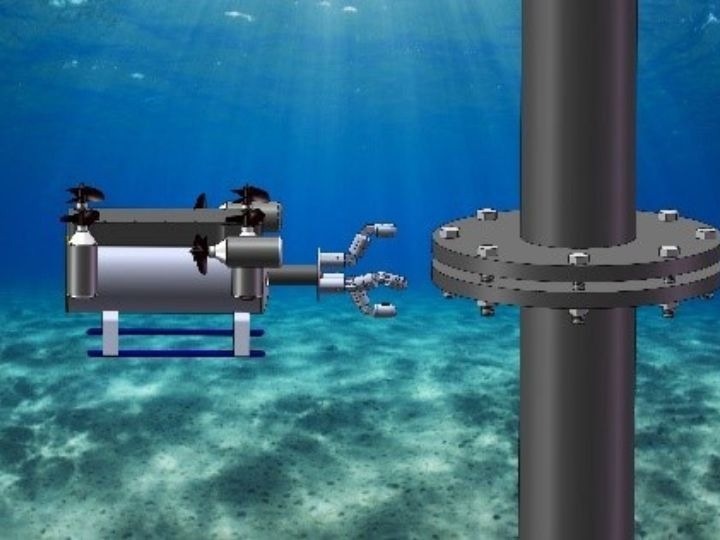With rising accidents in the worldwide oil and gas sector caused by broken pipelines, University of Houston researchers are creating an autonomous robot to detect probable pipeline leaks and structural failures during subsea inspections. The breakthrough technology will make the inspection process considerably safer and more cost-effective, while also safeguarding subsea ecosystems from calamity.
 Rendering of the SmartTouch technology now in development. Image Credit: University of Houston
Rendering of the SmartTouch technology now in development. Image Credit: University of Houston
Each year, thousands of oil spills occur in US waters for a wide range of causes. While most spilled crude oil is minor, it can nevertheless cause harm to vulnerable regions such as beaches, mangroves, and wetlands. Pipelines are frequently the cause of major spills. According to the Bureau of Ocean Energy Management, 514 offshore pipeline-related oil spills were documented from 1964 to 2015, with 20 leak amounts above 1,000 barrels.
Timely inspection of subsea infrastructure, particularly pipelines and offshore wells, is critical to avoiding such calamities. However, existing inspection procedures frequently necessitate the use of a highly-trained human diver as well as significant time and money. When the inspection objective is deep underwater, the difficulties multiply.
The SmartTouch technology being developed at UH consists of Remote Operated Vehicles (ROVs) outfitted with multiple stress wave-based smart touch sensors, video cameras, and scanning sonars that can swim along a subsea pipeline to inspect flange bolts–bolted connections, according to the Bureau of Safety and Environmental Enforcement (BSEE), have increased the rate of pipeline accidents that result in leakage.
The BSEE has awarded a $960,493 grant to UH researchers Zheng Chen, Bill D. Cook Assistant Professor of Mechanical Engineering, and Gangbing Song, John and Rebecca Moores Professor of Mechanical Engineering, who are collaborating with Oceaneering International and Chevron.
By automating the inspection process with this state-of-the art robotic technology, we can dramatically reduce the cost and risk of these important subsea inspections which will lead to safer operations of offshore oil and gas pipelines as less intervention from human divers will be needed.
Zheng Chen, Bill D. Cook Assistant Professor, Mechanical Engineering, University of Houston
He also mentioned that a ROV prototype has been tested in his lab and Galveston Bay.
The trials validated the proposed method for assessing the looseness of subsea bolted connections. The University of Houston’s Subsea Systems Institute financed preliminary studies.
Pipelines fail for a number of reasons, including equipment problems, corrosion, weather, and other natural causes, as well as vessel-related mishaps, which account for the majority of significant leaks. Toxic and corrosive fluids that spill from a leaky pipe can cause catastrophic environmental degradation.
Corrosion is responsible for most small leaks, but the impacts can still be devastating to the environment. Therefore, our technology will be highly accurate in monitoring corrosion and will also help mitigate the chances of pipeline failure from other factors.
Gangbing Song, Study Co-Principal Investigator and John and Rebecca Moores Professor, Mechanical Engineering, University of Houston
Previously, he worked on a variety of damage detection applications, including crack identification, hydration monitoring, debonding, and other structural abnormalities.
The UH researchers are working with Oceaneering International, an industrial leader in ROV development, non-destructive testing and inspections, engineering and project management, and surveying and mapping services. In addition, Chevron, a large oil and gas company, will assess the technology’s possible commercialization.
According to the researchers, the SmartTouch sensing system will pave the way for examining various types of subsea structures by serving as a design blueprint for future robotic technologies.
Chen added, “Ultimately, the project will push the boundaries of what can be accomplished by integrating robotics and structural health monitoring technologies. With proper implementation, the rate of subsea pipeline failure and related accidents will decrease, and subsea operations will be free to expand at faster rate than before.”